Table of Contents
- Emails under 300 words get the highest open and reply rates—brevity significantly boosts engagement.
- Including full press releases or long intros may lower pitch effectiveness; link out to details instead.
- Focus on journalist relevance—tailor pitches to their beat, not just broad verticals.
- Authentic personalization beats generic flattery—avoid space-wasting compliments.
- Use Dropbox or Google Drive links for datasets to reduce clutter and help bypass spam filters.
Since BuzzStream is an email outreach tool, I frequently discuss subject lines, email personalization, and follow-ups in digital PR with PR professionals.
Although we’ve conducted numerous studies using BuzzStream data, one question that consistently arises is the optimal email length.
“How long should my email be?”
On the one hand, PRs like Hannah Smith, suggest including everything a journalist needs to write a story.
On the other hand, we’ve heard from Muck Rack that a journalist prefers a pitch to be under 200 words.
To find out, I analyzed millions of emails across hundreds of campaigns in BuzzStream to determine the best email length practices.
Jump down to methodology.
Do Shorter Emails Get More Opens?
Let’s start with open rates.
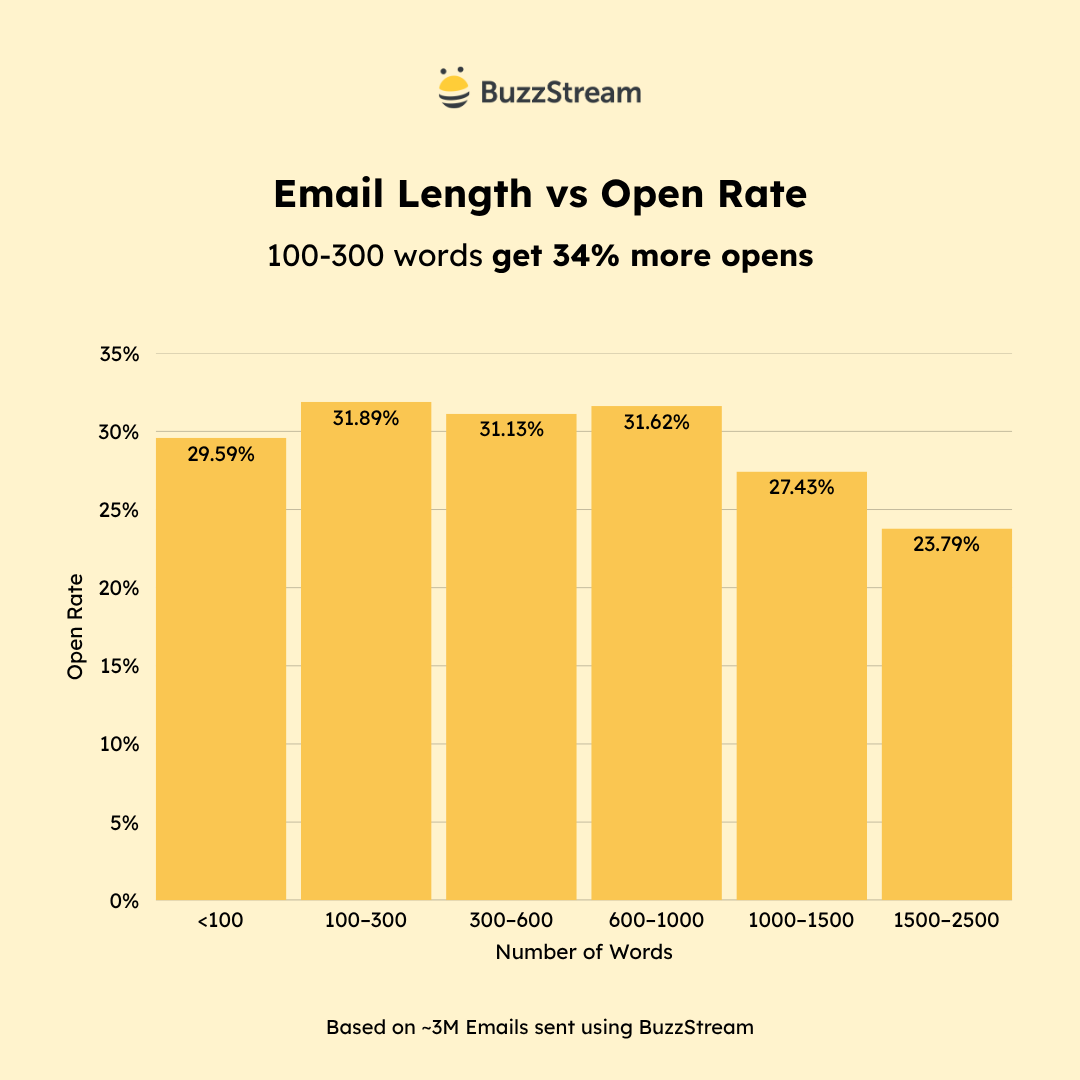
We saw the highest open rates with projects that have fewer than 300 words.
Although rates didn’t fluctuate significantly until we reached 1000+ words.
Again, as in all our studies, I should caveat that open rates have some noise due to the way Google and Apple handle opens.
That said, we’ve a robust dataset of over 3 million emails in this study, so it remains directionally reliable.
So, let’s look at replies next.
Do Longer Emails Impact Replies?
Shorter emails continue to get replies and in a much bigger way:
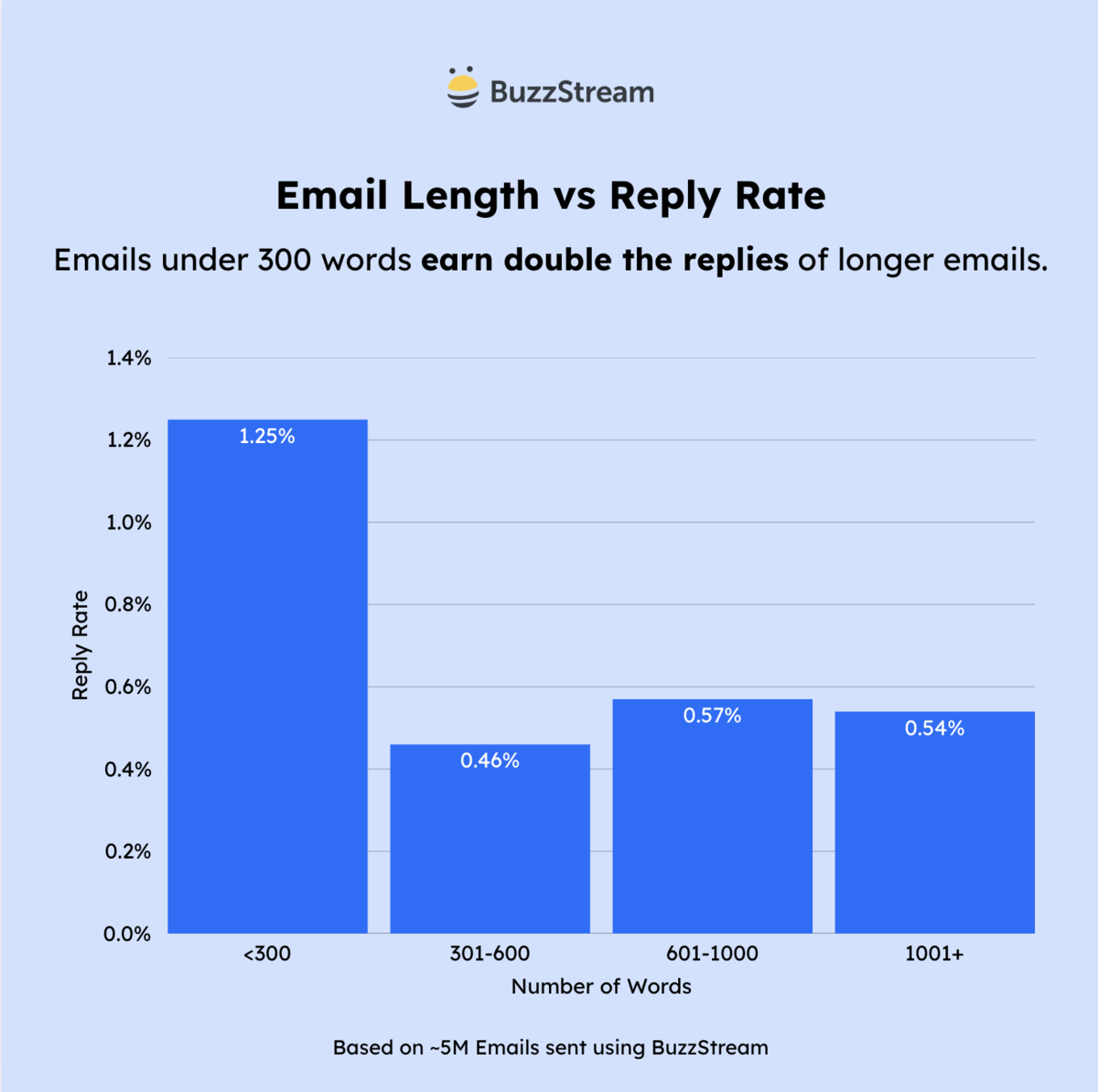
Under 300 words appears to more than double the reply rates for longer emails.
Still, it could be that providing shorter emails just means that you aren’t providing enough information, and thus making the journalist reply to ask for more.
However, upon closer examination of the data, I found that the replies in most cases were from a journalist stating that the piece was a suitable fit, or, in fewer cases, a rejection email reply.
Add to the fact that about half of journalists say they seldom or never respond to emails, according to Muck Rack, and replies get a little muddy as a KPI.
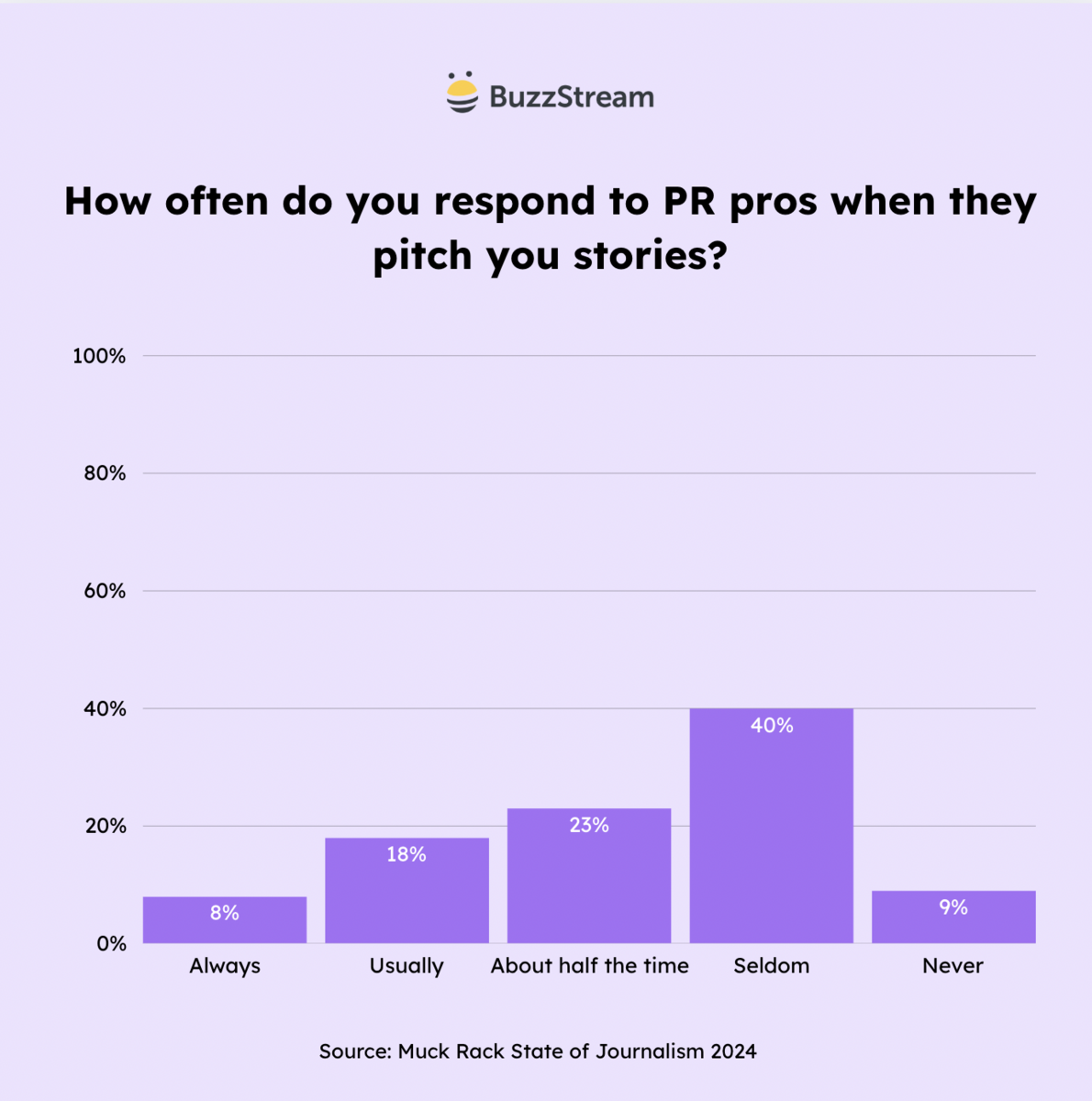
So, it feels like open rates are the best indicator for success (outside of actual placement rate), which leaves me with one other lingering concern:
When pitching journalists, I’ve always followed the best practice of including everything a journalist needs to write a post, which, upon reviewing the data, I found most successful pitches did.
But how do you do that and still keep it to under 300 words?
How Long Should Your Email Be?
It turns out keeping an email under 300 words is certainly doable, even for ones with a lot of information.
I’ll show you an example.
Here’s a pitch for a (fictional) post displaying the top 10 states in a list as well as key findings for a journalist.
The whole thing comes to less than 200 words:
Hi Claudia,
Car culture is alive and well across the U.S., but which states are truly the most car-obsessed—and which car models are capturing the most attention?AutoFinders recently analyzed Google search trends to reveal where passion for cars runs deepest.
Their research also highlights the most-searched car model in each state, plus the regions most excited about upcoming releases.Here are the top 10 most car-obsessed states based on average monthly car-related searches:
- California – 1,350,000
- Texas – 950,000
- Florida – 800,000
- New York – 640,000
- Pennsylvania – 520,000
- Illinois – 480,000
- Ohio – 420,000
- Georgia – 395,000
- North Carolina – 380,000
- Michigan – 355,000
Key findings:
- California leads as the most car-obsessed state, with over 1.3 million car-related searches monthly.
- The Ford F-150 is the nation’s most popular car model.
- Michigan is especially interested in electric vehicles, with “EV news” searches up 900% this year.
- Florida is watching for the latest model launches more than any other state.
You can see the full list and other data here.
I’d love to know what you think!
The main takeaway from this study for me is that keeping your pitches under 300 words is essential to optimizing your open rates.
Here are some tips on keeping it short while still maintaining the amount of information necessary for a journalist to write about your post.
Tips for a Shorter (But Informative) Email Pitch
Here are some tips from our expert network as well as my own personal experience.
1. Cut the Intro and the Fluff
Start with the story, not your bio.
Unless you are pitching an expert comment from yourself, a journalist rarely needs to know exactly who you are unless it’s incredibly relevant.
Plus, it will say it in your signature.
Here is a tip from Hana Montgomery, founder of Shout Bravo (acquired by Incubeta):
“Keeping your email short and sweet is the key.
Get to the point quickly, answer the most important Who, What, Where, and When.
To keep emails snappy, I love doing the ‘So What’ challenge.
If you read your email, whether that is the first paragraph or your whole email, and at any point you ask ‘So What’? You need to make changes.”
Rosie Taylor, author of Get Featured Subtack and freelance journalist, echoed this sentiment:
“Short, to-the-point emails are easier for busy journalists to read and process, so I’m not surprised they’re getting the best reply and open rates.
But I suspect there’s something else going on too: the best pitches I receive are those which distill the most interesting and important parts of the story into just a few sentences.
So if you’re taking a concept and effectively summarising that in 100 words, you’re likely writing a stronger pitch than one which rambles on for several paragraphs.”
2. Cut the (Usually Fake) Flattery
“I saw that you wrote about X and I liked it because Y.”
Unless you are authentic, this kind of thing is just a waste of space.
Digital PR expert and former podcast guest, Hannah Smith of Worderist told us:
“Firstly, I just don’t believe that journalists are that interested in hearing that you’ve read or that you loved a bunch of their articles…
Like, it can sound a bit insincere, I think is part of the problem. It can kind of feel like a bit of an empty statement. But also I think that you’re potentially clogging up your pitch with fluff, right?”
There are definitely ways to personalize that are authentic and I’ve covered them in my email personalization post.
3. Provide Datasets via Dropbox
One easy way to cut down the amount of words in an email is to provide things via link.
Instead of pasting an entire list, simply link to the full dataset from Dropbox or Google Drive.
4. Avoid the Cut and Paste Press Release Technique
Similar to the one above, if you really think the journalist will need the press release, provide a link to it.
The idea is to provide just enough information for the journalist to get started, not all of the information.
Alex Fiske from digital PR agency, Aira told me:
“We made a tweak around 12 months ago, going from long emails, with press releases included in the body, infographics, to now short and snappy emails.
We’ve certainly seen better email-to-coverage conversions (open rates are tricky as you can use the same subject line for a big or small pitch).
The key success factor we’ve found is moving away from infographics to display data, to keeping it simple with tables.
This way, journalists can copy and paste the data, making their lives much easier.”
As you can see, simplicity reigns.
5. Only Focus On What Is Relevant to Your Target Journalist
One easy way to keep the word count down is to ensure you are only pitching them what is important to them.
Taylor Raymond, Digital PR with Resolve & Fractl told me:
“A solid media list and thoughtful personalization help, but what matters most is showing why the story belongs.
Focus on the journalist’s beat, not just the vertical.
Review their recent work and ask whether your story aligns with what they typically cover. If not, adjust the angle or look for someone who’s a better match.”
The only way to do this is to ensure you are keeping tabs on what they’ve written recently.
For instance, say I am looking to pitch a story to Variety’s Executive Editor Film & Media, Tatiana Siegel:
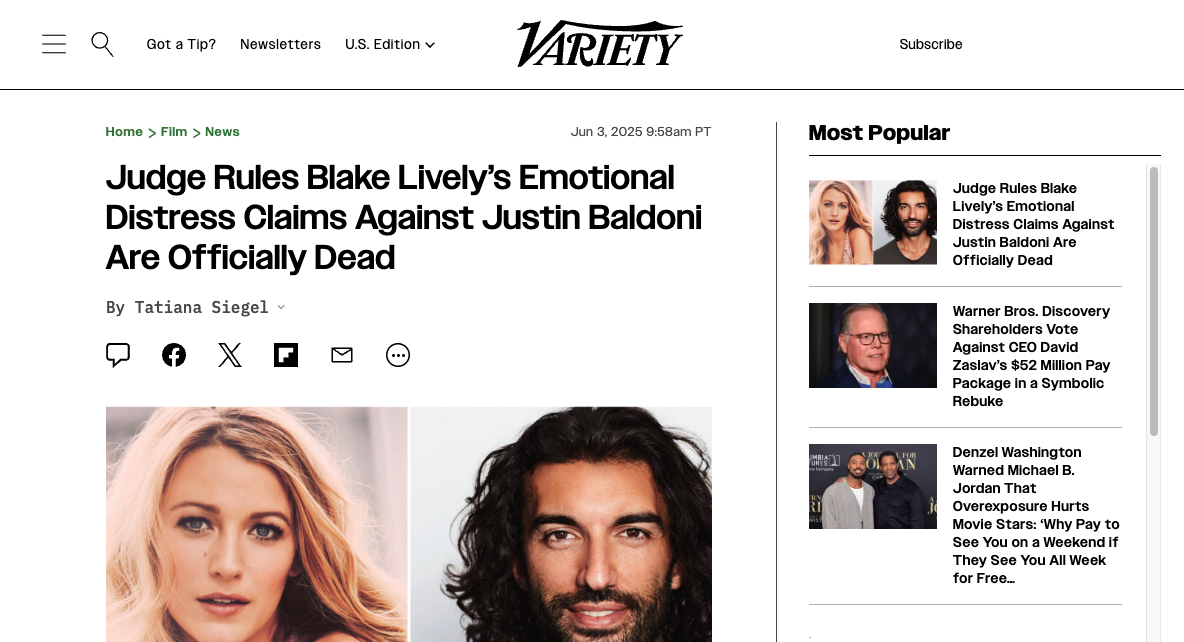
I can look at her recently published articles to understand her beat, or use our new media list building tool, ListIQ, to display all of them quickly:
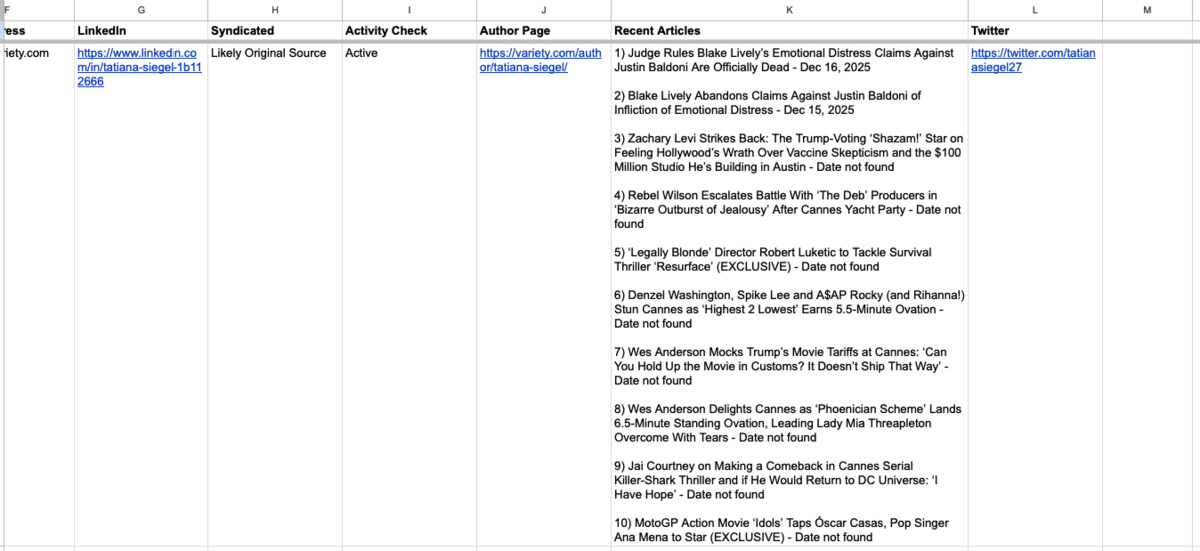
I see that she’s covered the Blake Lively story in more than one story.
So, this helps me refine my pitch and only include details that are highly relevant to her.
Short Emails Don’t Mean Low Quality
At the end of the day, a shorter email means simpler, not lower quality.
It means a more condensed email that still retains all of the key elements a journalist needs to take action and write a compelling story.
Lastly, it goes without saying that this should be used as a directional guide. If you haven’t been getting replies or coverage, maybe your email is too long.
When in doubt, put yourself in the journalists’ shoes. If you received 100 email pitches per day, what would make one stand out?
Methodology
These are emails sent by our customers who primarily do digital PR (as opposed to more traditional link building outreach). The parameters are set to include projects with at least 25 emails to avoid ultra-small campaigns, and exclude auto-replies and bounces to minimize noise. These are all the first emails in a sequence (meaning they are not follow-up emails).

 End-to-end outreach workflow
End-to-end outreach workflow



 Check out the BuzzStream Podcast
Check out the BuzzStream Podcast







